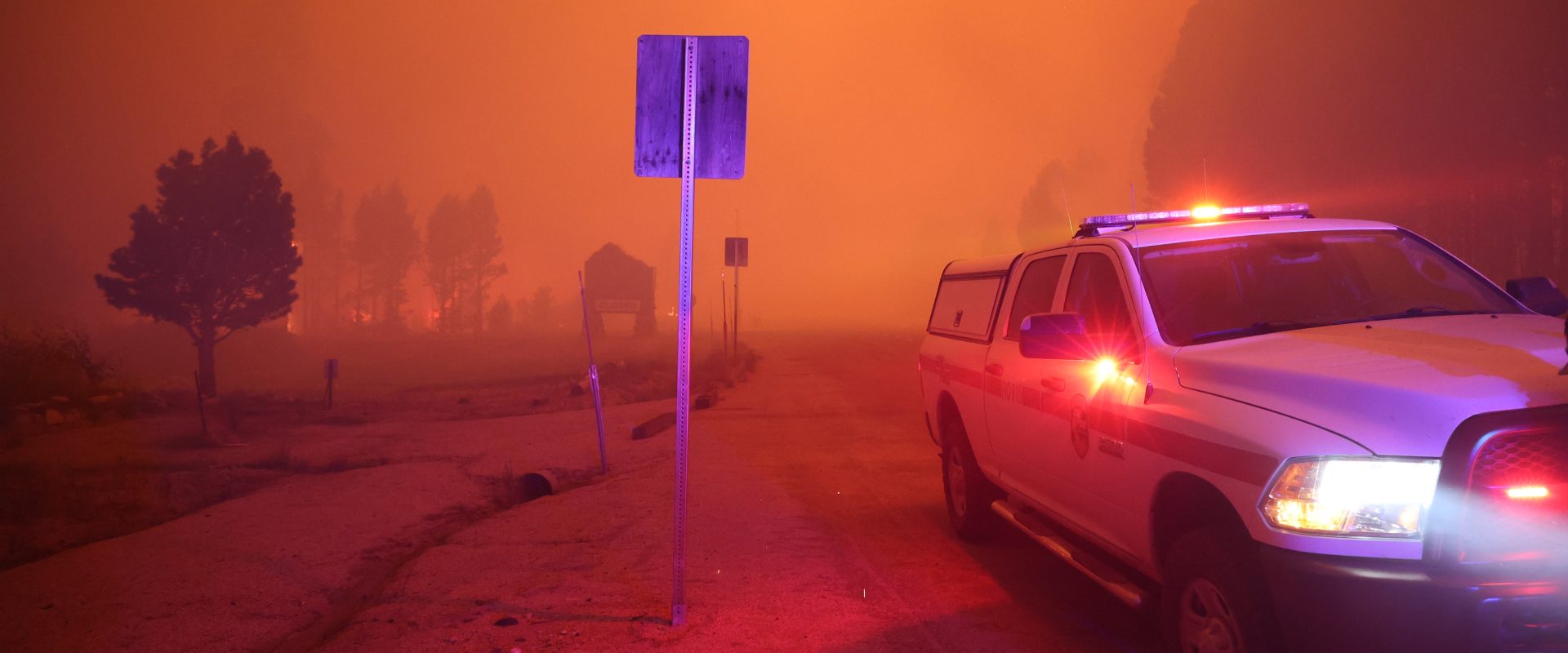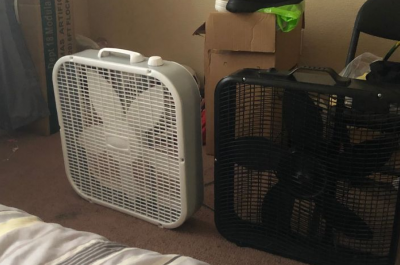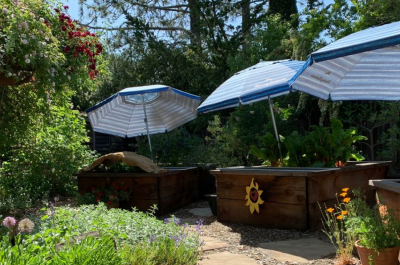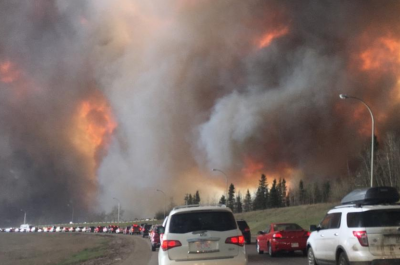Throughout 2021, ISeeChangers told the collective story of our lives in the time of climate change. From smoky skies, to damage to their homes during hurricanes and floods, to ideas for solutions and action, here’s what the ISeeChange community saw change this year.
If you saw any of these trends, it’s never too late to post on ISeeChange-just change the date, time, and location to match your sighting. Every post helps builds the record of change and helps source solutions.
2021 was the sixth warmest year on record with the ten hottest years all coming in the last 12. ISeeChangers endured unprecedented heat waves in the summer months and unusual warm spells in the spring, fall, and even winter.
Recording breaking temps in Seattle area. I’m on the northwest side of the Puget Sound where temps are mid 90s. I will need to water my garden this evening.
— Robin Salthouse
Greenhouse gas emissions continued to rise in 2021. The U.S. saw a 6.2% increase in climate change-causing emissions in 2021 compared to 2020. Researchers estimated that global emissions of carbon dioxide were around 36.4 billion tons in 2021, or about 1/10 of the estimated “carbon budget” the world has to keep global temperatures below the 1.5°C threshold.
Beyond increased temperatures, it was another year of devastating natural disasters with winter storms, droughts, hurricanes, wildfires and extreme rain events causing the loss of over 500 lives in the U.S and totaling $145 billion weather and climate disasters.
A new IPCC report released in August announced that the (already stretched) goal of limiting warming to 1.5°C was nearing impossible. Despite this, strong and sustained emissions reductions would save lives both in the immediate and long-term by reducing air pollution and limiting warming and climate change, respectively.
- Winter weirdness
- Some places saw early spring
- Drought in the West
- Long, hot summer
- Another active hurricane season
- King tide flooding
- Warm fall temperatures
- Community solutions and ideas
Wild winter weather: From mild temperatures to record-breaking cold
Winters around the globe are warming. In the U.S., nighttime winter temperatures are increasing 30 percent faster than the annual average increase. But even as the average warms, winters can still get really cold. Many ISeeChangers reported mild temperatures in January 2021. “Winter over the last few years has seemed to decrease in its intensity,” wrote Texas ISeeChanger Sandra Kile. “We are only averaging 1 to 3 days of any wintery precipitation.”
After 11 days with no precipitation, we woke up to 1.82″ of rain in the gauge this morning – half the monthly normal precipitation overnight. Even more strange than a January downpour, I didn’t need to put on a jacket to go out to read the gauge. It feels like late March, certainly not January. We have been 4-5F above normal so far this month.
— Judy Donnelly
Some areas, particularly in the Western U.S. but also in Boston and in Ontario, Canada, ISeeChangers noted reduced snowfalls in the winter of 2020-2021. In late fall and December 2021, parts of the West Coast were hit with atmospheric rivers that brought heavy snowfalls and reduced drought somewhat.
Several days of rain are seeping into the exposed soil. The forecast was 4 days of snow, but it’s been mostly rain as the temperatures are hovering around 35 degrees. Under 6000 ft the rain melted much of the remaining snow., but in the high country it snowed 8”. Every inch matters since we are in an area experiencing ‘exceptional drought’.
— AMBER KLEINMAN
In other parts of the world, like the U.S. Midwest and Berlin, Germany, snow was heavy and stuck around for most of the winter.
Where do we put the snow. About 6 more inches this morning and 5-10 more inches tonight! Yikes! At least it will be a little warmer tonight- only 11F instead of below zero air temp.
— Cheryl Gucciardo
By February most of the continental U.S. was plunged into weeks of record-breaking cold weather due to Arctic air being pushed south by a weak polar vortex. Along with the cold came snow and ice, some of which caused deadly power outages. Due to a wide variety of issues from generation failures to freezing equipment to inadequately predicted demand, Texas’ power grid failed. This led to at least 57 deaths, power outages for 4.5 million homes, and damage to pipes.
Woke up to snow and no power or cell service on Monday morning (February 15, 2021). Temperatures were in the teens. Thought the power would come back on after a few hours but it stayed off until Tuesday afternoon. Our pipes froze Monday night as our house was less than 55 degrees on the inside. Luckily we had charged our electric car so we could warm up safely in the garage with no emissions and charge our other devices. We bundled up and toddler was in good spirits and extra snuggly. We also used our grill to cook dinner and moved our food outside to limit spoiling. Neighbors with generator were very generous. All services were restored by Tuesday at 3pm and have managed to stay on.
— Meredith Jennings
Plants and allergies emerged earlier in the spring
ISeeChangers reported early signs of spring in the Southeastern, Western and Northeastern U.S. as well as in Germany. In these sightings, birds, bugs and blooms all arrived early.
Mid-January flowering plants, including Roses and Flowering crab tree. We usually don’t see these until Spring March/April…but every year they come out earlier.
— Rachel Molloy
Allergy symptoms also showed up early in the Southeast – in places like New Orleans and Tennessee. ISeeChangers said allergy symptoms were more severe and lasted longer than during previous seasons. The CEO and president of the Asthma and Allergy Foundation of America Kenneth Mendez told the Huffington Post, “Year over year, we’re finding climate change is a major factor in worsening symptoms for spring and fall pollen seasons.”
Although I may not have bad allergies, many people I know do. My sister has allergies to specific pollen and dust however nothing this bad. This year, it seemed to hit her much harder than usual. I ended up buying a diffuser for her and have never needed to do this in the past. She also has limited her time outside because her allergies are so bad. Both my neighbors have also been struggling with their allergies this spring.
— Zoe Luong
Spring temperatures swung between unusual heatwaves and cold spells. Quick warmups led to snowmelt flooding in places like Fort Collins, Colorado.
During the past 2 weeks, I’ve been using my swamp cooler most days to stay comfortable, but there are still no new buds on my older rosebushes or the flowering tree in my front yard- just a few new leaves.
— Heidi Gail
Snow storms that came late in spring often fell on already blooming plants causing concerns for farmers and fruit harvests.
We had lovely warm weather last week and all of the trees are in bloom. Now we have had freezing weather for two days and it is predicted to last at least one more day. We had no apples, pears, walnuts, or acorns last year and it looks like we may have a repeat. Also we are getting very little rain and aside from one big snow we had little snow over the winter. North of us they are saying they have drought conditions.
— Khathryn Hedges
In France’s vineyards, a late frost took out 80-90% of the crop for some growers.
Drought in the Western U.S.
It was another year in megadrought history for the West with limited snowfall and rain throughout the typically wet winter months. 2021 saw the largest area of land in the West under drought conditions since the U.S. Drought Monitor began in 2000.
While walking along the Russian River in Geyserville I made the following observations. The river was confined to the main channel which is a indication of the low volume of water for early February. The vegetation was a mix of native and invasive species of plants. The two of the more prominent invasive species I observed where Arundo and Hydrilla. The Arundo scattered in the secondary channels and dominating the riparian area surround the river. Hydrilla, less dominant but present in the water edges of the river. Are these invasive species a result of human activity and/or climate change?
If the temperature increased by 3-5 degrees Fahrenheit, the area might be impacted by having a more arid climate with more extreme weather. In the dry years the river might experience a lack of water to maintain a continuous flow causing more pooling in the summer months to increase the water temperature. Invasive species such as Hydrilla might become more prevalent. The riparian vegetation might change to favor the more drought tolerant species of plants and trees.
— Tyler Klick
The warm, dry weather prompted ISeeChangers to prepare early for the fire season ahead.
We are enjoying cooler weather this week (as is the lupine in the bottom left of the east photo). Physically preparing for fire season is fine (buying filters, etc.) Mentally preparing for months of smoke has been harder.
— Lauren McNulty
When fires did spark, they grew rapidly and caused extreme destruction. Smoke plumes extended all the way to the East Coast like they did in the summer of 2020 and aggravated asthma and respiratory illnesses. By September, Portland, Oregon; Seattle, Washington; San Francisco and Los Angeles were all in the top six cities for worst air quality.
I spent the weekend in steamboat, co and it was Smokey all weekend from nearby fires. Friday and Saturday weren’t as bad as Sunday and Monday. It felt overcast Sunday and Monday with so much smoke, and we couldn’t see the surrounding mountains and the hills were hazy. Ash started falling Sunday morning and continued until we left. (The balloon pic is from Sunday morning and the sunset pic was from Saturday evening). It was hot all weekend, with daytime temps in the 90s.
— Carla Bam
Unfortunately, fire season didn’t end this year, thanks to the dry summer and fall in Colorado that contributed to the fast moving Marshall Fire, fueled in part by earlier spring grasses.
Strange cloud north of Thornton — heard on the radio it was from grass fires in Boulder County. Super windy today too.
— Marlee Hassell
Summer was hot early and often
Extreme heat started early and lasted throughout the summer months. The Boston area had two days above 90°F in May. “Summer started very early this year,” wrote David Sittenfeld in Massachusetts. “The water up here feels like it often does on July 4.”
This is our second 90+ degree day before JUNE and I think that’s weird!!!
Dog recommends finding grass in the shade and rolling in it!
— Katie Baur
The hot temperatures in New England lasted into June leading ISeeChangers to take protective measures like shading their vegetable gardens.
Hot and humid. Newly planted seedlings started to wilt and leaves dried on edges. Covered cucumber plants with shade cloth. Covered flower seedlings to protect from hot sun.
— Judith Saum
In late June a record-breaking extreme heat event hit the Pacific Northwest and British Columbia. During the heatwave, ISeeChangers shared sightings of the impacts of extreme heat like scorched raspberries and dead chickens.
This is definitely climate change in accelerated action:
Trees are suffering and limp. These are huge trees over 40 to 50 years old and up too. Needles and leaves turning yellow and dropping on some. Have put out an unusual number of cones and seeds as they know they’re dying.
My garden has scalded red raspberries on one side with the shaded side green and unripened. Totally useless to eat. Several plants have bolted, quit producing and just gone to seed.
I’ve noticed wildlife is desperate for relief as well and are taking brave chances to get to water.
Myself and my dog are staying inside with temps of 26 – 29C even with an air conditioner which is working overtime. Drinking lots of water and using ice packs/cubes.
The pavement is very hot and I have to carry my dog over it to get to the grassy area. Within 10 minutes she is panting and so am I from carrying her!
— Edie Cartwright
Heat waves continued well into August creating difficult conditions outside and at work like in this New Orleans kitchen.
I work in a kitchen where we are regularly too hot. I buy 100 freeze pops a week and we go through them easily. Most people spend their breaks in the walk-in cooler. Today is actually an improvement from the 93° it was yesterday
— Destiney Bell
A milder, but still devastating, hurricane season
August also brought the worst of the tropical season to the U.S. with Hurricane Ida. But the Atlantic hurricane season, once again, started early, and finished as the season with the third-most named storms on record.
The winds from Claudette damaged Frederica, the MESS Hall dragon. Probably beyond repair, sadly.
— Megan Pratt
Tropical Storm Henri brought heavy rain and some flooding to parts of the Northeast which caused even more problems when the remnants of Hurricane Ida passed through a week later.
Remnants of storm Ida- Enfield received 5.8” of rain. We did have lighting and thunder at about 10:30-11:00pm. We live on the lake and although they lowered it in anticipation this is probably the highest I’ve ever seen it you can see from the images it flooded the mulberry trees across the lake about is partly submerged and I have a dirt basement that for the first time is filled with mud and water
— Christina Nieves
Hurricane Ida first made landfall in Louisiana and caused damage and prolonged power outages for many New Orleans ISeeChangers.
After riding out Hurricane Ida at our home in Jefferson, LA we decided we had enough heat, no water pressure and toilets that don’t flush and left home yesterday. We were fortunate that our neighborhood had little structural damage – downed trees and fences and roofs missing shingles. As we headed north we saw utility trucks lined up and ready to assist. We did not see power until we hit Brookhaven, MS. The gas stations that were open had long lines.
— Sue Marchal
King tide flooding
Flooding occurred in coastal areas throughout the year, but were particularly pronounced during King Tide Season. ISeeChangers up and down the Atlantic Coast in places like Norfolk, Virginia and Ocean City, New Jersey reported flooding from King Tides in November. In Miami, a heavy rain storm occurred during the fall King Tide which amplified flooding.
38th and N Miami Ave, 6:45am. Heavy rain storm on a King Tide day
— Alissa Farina
Warm weather continued into fall
Like spring, autumn brought above-average temperatures to many ISeeChangers from New Orleans to New England.
This is week two of my observations in the York Region Forest in Nobleton ON. This weeks observation were definitely not what I expected. I believe this is because of the warmer temperatures the region has been experiencing over the past few days. For example, todays high was 19 degrees Celsius. This is unheard of as usually the average temperature in November in the region is 7 degrees Celsius. I remember at this time last year, there was snow on the ground. I plan to compare this weeks high to next weeks high temperature. The weather network today reported that “The Great Lakes are at a RECORD warmth right now”, which explains the weather situation and may indicate a change in climate over the next few years if this record warmth becomes a trend. With this said, I believe the warmth in the region is responsible for this weeks observations. For starters, I did observe almost all the leaves on trees inside the forest have fallen off. This is normal for the season. However, I went to the stream and noticed it was lower than usual, running very slow, and the surrounding marsh had dried up. This is due to the rise in temperatures which has dried up the delicate marsh over the past few days. In addition to this, I saw the usual wildlife capturing photos of a chipmunk and a spider. I found the spider unusual as usually spiders will hibernate or seek shelter during the winter, but because of the warmer temperatures spiders like the one I captured on my camera today were active and about. Although it is not winter yet and still autumn, temperatures were expected to drop around this time.
— Marshall MacDougall
The trend continued into December with ISeeChangers noting a lack of snow and springlike temperatures. “Yes, it’s December and Christmas decorations are up in my neighborhood, but the weather does not feel like Christmas,” wrote Cherry Rubio in New Orleans. “My flowers are blooming: the sweet olives are especially fragrant, the geraniums are blooming beautifully as are zinnias and marigolds. The camellias are almost finished blooming. I see lots of bees daily in my yard and the occasional butterfly.”
Solutions ideas from the community
Throughout the year, ISeeChangers also posted their ideas for adaptation and mitigation solutions to the challenge of climate change in their communities.
For heat and drought, ISeeChangers proposed native plant gardens, shade tree plantings, using solar power for air conditioning and painting urban roofs white.
I hope the City starts some new planting projects soon so we can see the new Native Plant Ordinance in action! Native plants are so critical not only for pollinators and wildlife, but also as a nature-based solution for fighting climate change. I’m thrilled that Somerville passed this ordinance in April, but I’m anxious to see it implemented on the ground!!
The ordinance “establishes minimum requirements for native plants and trees to be planted in city-owned parks, open spaces and streets. Many similar ordinances encourage native planting without a specific metric, but Somerville has put percentage requirements on city space.”
https://patch.com/massachusetts/somerville/somerville-enacts-first-its-kind-native-plant-ordinance
— Erin Ellingwood
For flooding, ISeeChangers proposed speed bumps to slow cars from splashing water into nearby yards.
Flooding around McDonough 35 today. A neighbor said she had been emailing the mayor to add speed bumps to Cadillac street to stop cars from sending waves into houses. Not a bad idea especially around the school.
— Andy Leopold
ISeeChangers also celebrated new renewable energy projects in their areas, participated in climate strikes and shared new electric buses in their communities.
Somebody’s doing something right! I attended the ribbon cutting for Jack’s Solar Farm in Longmont, CO today. They generate 1.2MW with their sun tracking solar panels. They planted a 40ft wide living fence around the solar field (raspberries, elderberries, currants, blackberries, gooseberries, ground cherry, hazelnut, wood’s rose, beebalm, milkweed and sunflowers plus a beehive.) It’s all native plants – they are a GOLD Habitat Hero with Audubon Rockies. CSU, U of AZ and others are studying this project. The panels are raised 4′-6′ off the ground and some of this area has wonderful veggies being grown in it! It’s a start and a GREAT model! BRAVO!!!
— Trina Brockwell
Collectively, the stories on ISeeChange in 2021 also helped contribute to community solutions. In New Orleans, flooding posts across 29 flood events helped reallocate $4.8M to low income neighborhoods in Gentilly. The City of Miami used ISeeChange posts to help neighborhoods target stormwater infrastructure capital and grants. The Town of Whitby in Ontario started using ISeeChange for their climate adaptation planning this year. While eight science museums across the US tracked local changes.We’re kicking off 2022 with the Museum of Science in Boston, who is using ISeeChange in the climate exhibit this winter to track changes across the Northeastern US with science partners.
We hope the new year finds you healthy and happy. Keep documenting change in your environment this winter and throughout 2022 on ISeeChange. And stay tuned as we roll out more collective eyes and action to see changes and make them.
Cover photo by CALFIRE_Official.




